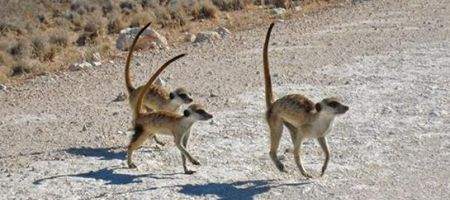Just as ancient emperors employed tasters to make sure their food was harmless, so meerkat ‘queens’ use more junior members of the group as guinea pigs.

They send out lower-ranking animals to check out busy roads, say Zurich-based scientists, giving an evolutionary advantage to the group as a whole.
The team observed several meerkat groups in the Kalahari Desert, forced often to cross a heavily-frequented road which runs through the reserve and effectively cuts their home range in half.
Field observations showed that in most cases it was the highest-ranked animal – the dominant female – who led her group to the road. Once they arrived, however, she yielded to a lower-ranked individual, who took up the role of ‘guinea pig’ to cross the road first.
Using this observational data, the team developed a relatively simple computer model to simulate for the first time the behaviour of a meerkat group, in which there are distinct social roles. It models a group of eight meerkats, one of which was assigned as leader.
In the simulations the eight ‘meerkats’ encounter a virtual barrier of variable size and risk.The model, says the team, clearly showed the reorganisation taking place at the front of the group – which the team interprets as indicating that the dominant female and the subordinate individuals have a markedly different appreciation of the danger.
“The dominant female’s highly risk-averse behaviour appears selfish. However, it makes a lot of sense for the long-term survival of the group and the closely-related individuals in it,” say the authors.
“Meerkats in fact minimise the threat to the whole group, even though it may imply for the ‘test individual’ to lose its life: the survival of all the group members may depend from that of the alpha individual.”






